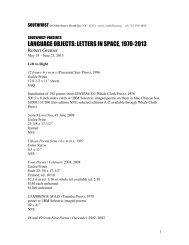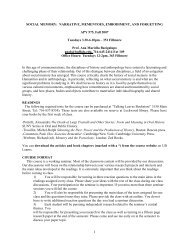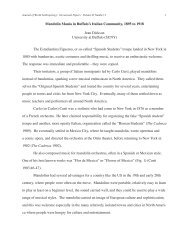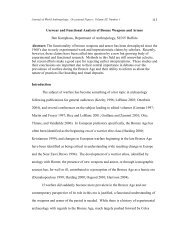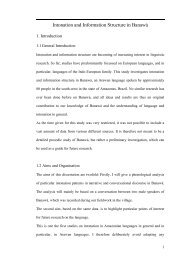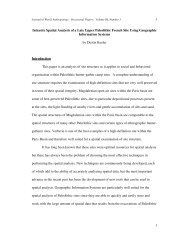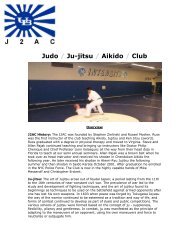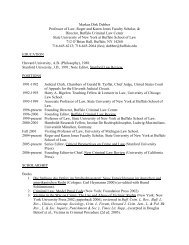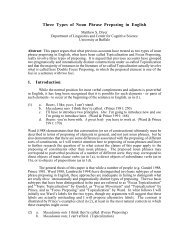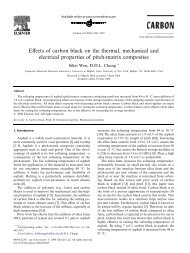Electrophysiological Evidence for Sentence Comprehension - Wings
Electrophysiological Evidence for Sentence Comprehension - Wings
Electrophysiological Evidence for Sentence Comprehension - Wings
You also want an ePaper? Increase the reach of your titles
YUMPU automatically turns print PDFs into web optimized ePapers that Google loves.
The participant had to press one of the two buttons of the Response Box, one <strong>for</strong> each<br />
experimental condition (violation and non-violation) as soon as he/she decided whether<br />
the target word (the last word in a sentence, the second word in word pair experiments)<br />
was correct or not. The data were collected on a recording computer in a <strong>for</strong>mat suitable<br />
<strong>for</strong> statistical analysis.<br />
b. The behavioral measures (verbal and non-verbal abilities) were tested in the Clinical<br />
Research Unit. Each child was tested by a language and speech pathologist and a<br />
psychologist who administrated the WISC and Raven Progressive Matrices Test. The<br />
testing was completed in two sessions (i.e. verbal and non-verbal abilities were measured<br />
separately) due to fatigue and loss of concentration inevitable when the tests took more<br />
than 45 minues. A child and the test administrator were alone in the room, but the one-<br />
way mirror allowed <strong>for</strong> monitoring the test procedure.<br />
All ERP recordings were per<strong>for</strong>med in the Laboratory <strong>for</strong> Psycholinguistic Research,<br />
University of Zagreb. The recordings were per<strong>for</strong>med in a darkened room with the<br />
participants sitting in an armchair in front of the computer screen. All recordings were<br />
per<strong>for</strong>med on a 40 channel NeuroScan NuAmps amplifier. The system consists of the<br />
amplifier, Stim II device <strong>for</strong> precise presentation of the stimuli (with 1 ms precision),<br />
stimulus computer and a recording computer with software <strong>for</strong> on-line and off-line<br />
analysis (Acquire and Edit, respectively). NeuroScan QuickCaps with 30 Ag/AgCl<br />
recording electrodes, 4 ocular (HEOL, HEOR, VEOU, VEOL) and 2 mastoid electrodes<br />
(M1 and M2) were used in all recordings. For statistical analysis SPSS 13.0 (2004)<br />
83




